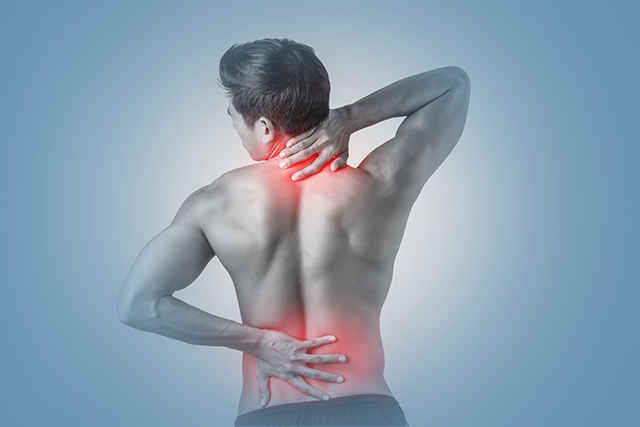
Understanding Back and Neck Pain
Back and neck pain are two of the most prevalent health complaints among adults globally. Such discomfort can drastically influence one's daily activities and overall quality of life. This article aims to provide an in-depth understanding of the causes, symptoms, and effective treatments of back and neck pain.
The human spine is a marvel of engineering, providing support and flexibility. It's no surprise that it's vulnerable to issues and injuries. With lifestyle changes and increased screen time, back and neck pain have become ubiquitous ailments.
Introduction to Back and Neck Pain
The spine is an intricate structure composed of vertebrae, discs, nerves, muscles, and tendons. When any of these components become inflamed or damaged, it can result in back or neck pain. In the U.S. alone, over 80% of adults experience lower back pain at some point in their lives, with neck pain being equally common.
Common Causes
• Muscle Strain: Overexertion, lifting heavy objects incorrectly, or sudden awkward movements can strain the muscles and ligaments, causing discomfort.
• Disc Injuries: The discs act as cushions between the vertebrae. Aging or injury can make them prone to rupture or herniation, pressing on the nerves.
• Arthritis: Osteoarthritis can affect the lower back. In some cases, it can cause the narrowing of space around the spinal cord, a condition called spinal stenosis.
• Poor Posture: Chronic poor posture can contribute significantly to back and neck pain.
• Osteoporosis: Bones, including the vertebrae, become brittle and can lead to fractures.
• Nerve Compression: Conditions like herniated discs or bone spurs can press on the nerves branching out from the spinal cord.
Or as a summery for the common causes for back and neck pain:
a. Lifestyle Factors:
• Sedentary Lifestyle: Lack of physical activity weakens spinal muscles.
• Office Ergonomics: Improper chair height, poor workstation setup, and prolonged sitting can lead to back and neck strain.
• Excess Screen Time: Continuous downward gaze at mobile phones and tablets causes 'tech neck' or 'text neck.'
b. Physical and External Factors:
• Accidents: Whiplash from car accidents or falls can cause significant neck pain.
• Age: Degenerative disc disease and other age-related changes.
• Disease: Conditions like scoliosis or fibromyalgia can cause back and neck pain.
Identifying Symptoms
Symptoms can vary depending on the cause and the affected area:
• Pain: It can be sharp, stabbing, or dull and may be persistent or intermittent.
• Muscle Tightness or Spasm: Often felt in the back or neck region.
• Reduced Flexibility: Difficulty in moving the back or neck.
• Numbness or Tingling: Often due to nerve compression.
• Weakness: Certain conditions can affect the strength in arms or legs.
Available Treatments
• Self-Care Remedies: These include rest, ice, and heat applications. Over-the-counter pain relievers, such as ibuprofen, can also help in reducing inflammation and pain.
• Physical Therapy: A physical therapist can guide you through exercises and stretches to strengthen your back and neck muscles.
• Medications: Depending on the pain type, doctors might prescribe muscle relaxants, pain relievers, or even antidepressants.
• Injections: Some people benefit from corticosteroid injections that reduce inflammation and relieve pain.
• Alternative Therapies: Options include acupuncture, chiropractic treatments, and massage therapy.
• Surgery: In severe cases, when the pain is caused by structural issues like herniated discs or spinal stenosis, surgery might be necessary.
Tips for Prevention
• Maintain a Healthy Weight: Extra pounds can strain the back muscles.
• Exercise Regularly: Engage in activities that strengthen the back and neck muscles.
• Practice Good Posture: Whether sitting, standing, or walking, always ensure your posture is upright.
• Lift Properly: Use your legs, not your back, and never twist when lifting.
• Quit Smoking: Smoking can reduce blood flow, leading to disc degeneration.
The Psychological Impact of Chronic Pain
Chronic pain doesn't only affect the body. Its impact on mental well-being can be profound.
a. Depression and Anxiety:
Living with persistent pain can lead to feelings of hopelessness, leading to depression. Anxiety might arise from the fear of pain recurrence or worsening.
b. Sleep Disturbances:
Pain can interrupt sleep patterns, resulting in insomnia or unrestful sleep, which can further exacerbate pain.
c. Social Isolation:
Chronic pain sufferers might avoid social interactions or activities they once enjoyed, leading to feelings of loneliness and isolation.
Holistic Approaches to Management
a. Mind-Body Techniques:
Meditation and Deep Breathing: Helps in managing pain by calming the mind and reducing stress.
Guided Imagery: Uses the power of imagination to induce relaxation and reduce pain.
b. Dietary Interventions:
Anti-inflammatory Diet: Consuming foods like turmeric, ginger, and fatty fish can help reduce inflammation, a common cause of pain.
Avoiding Trigger Foods: Some people find relief by eliminating or reducing foods like refined sugars, gluten, or dairy.
Myths and Misconceptions
There's a lot of information on back and neck pain, but not all of it is accurate.
a. "No Pain, No Gain":
While exercise and physical therapy are essential, pushing through severe pain can cause harm.
b. "Only Heavy Lifting Causes Back Pain":
Even light activities, if done with poor posture, can result in pain.
c. "Pain Is Just Part of Aging":
While age can be a factor, pain is not an inevitable part of aging and can often be managed or treated.
While back and neck pain can be debilitating, understanding its causes, recognizing the symptoms, and seeking appropriate treatment can significantly improve one's quality of life. By adopting preventive measures and consulting with healthcare professionals, one can effectively manage and, in many cases, entirely overcome these challenges.